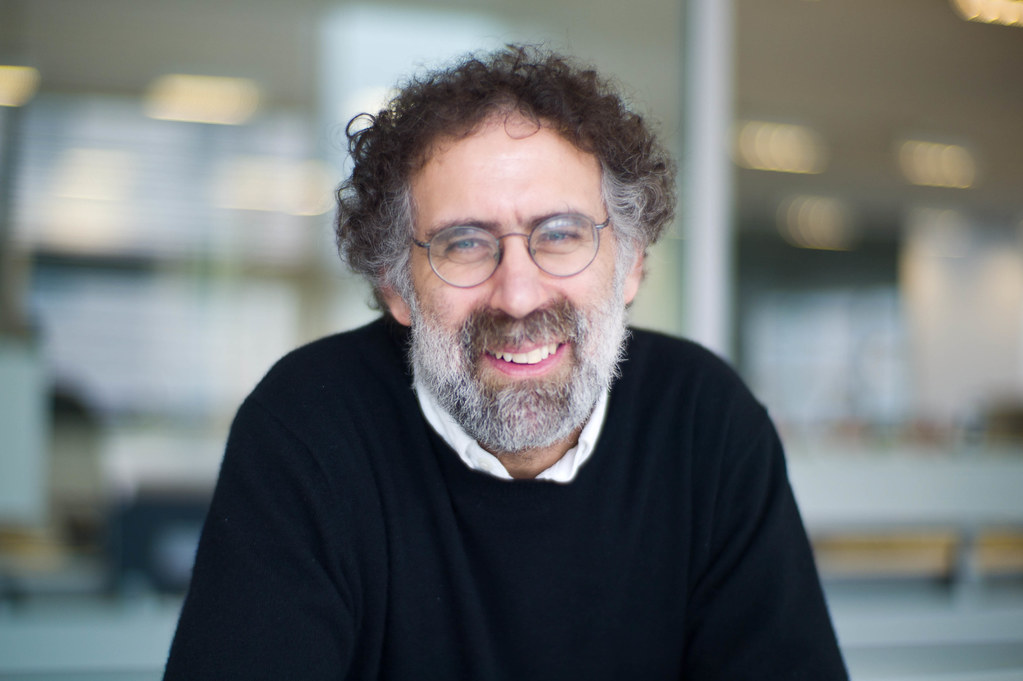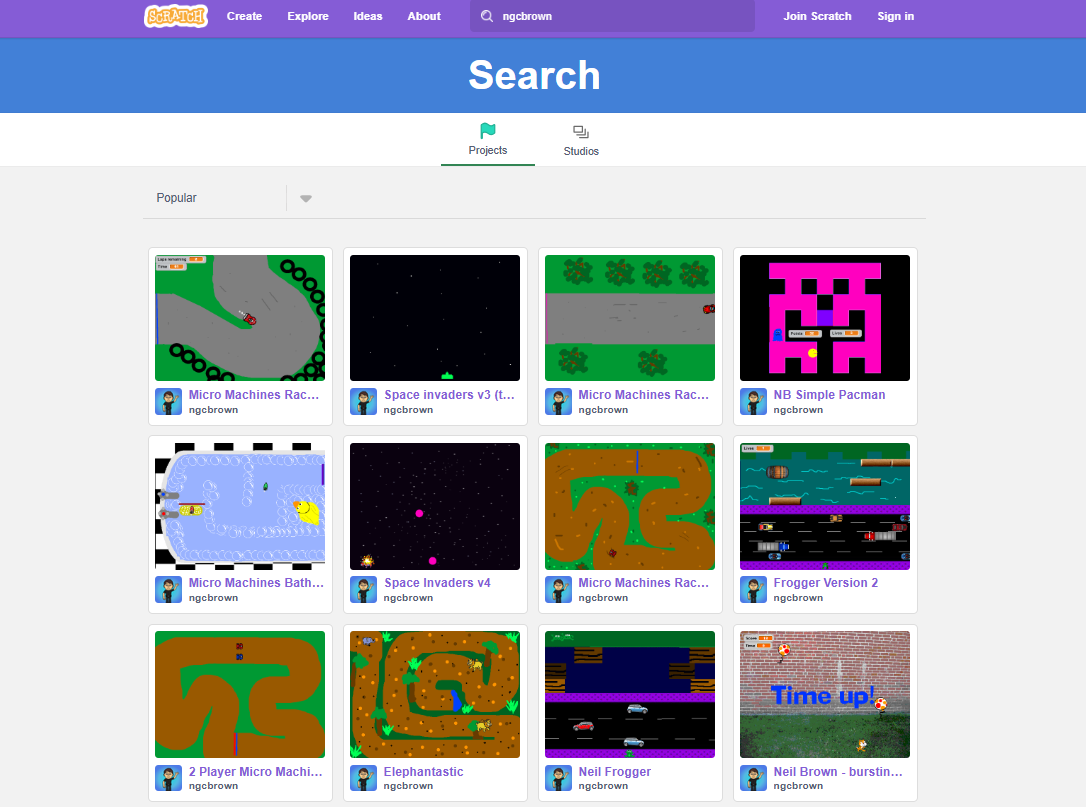Scratch: How a Colourful Cat Changed Coding Forever

If you’ve ever been in a primary computing lesson and seen a cartoon cat spinning across a screen while a child proudly declares, “I made that!”, chances are you’ve met Scratch, the revolutionary programming platform that is now well over twenty years old.
Not just any platform. Scratch is the first step to coding for millions of young minds around the world. And it all started at Massachusetts Institute of Technology (MIT), world renowned as one of the best universities in the world for tech and the place where so many other great things begin.
A Bit of Background
Back in 2003, a group of clever folks at the MIT Media Lab, led by Mitchel Resnick, decided that programming shouldn’t be reserved for people who drink too much coffee and speak fluent Java. Text-based programming languages have a steep learning curve, so they wanted to create a tool that would let children (and curious adults) build games, animations, and interactive stories, without needing the stress of syntax errors and misplaced semicolons.
And so, Scratch was born: a block-based programming language with a user-friendly interface that lets you snap together colourful code blocks, a bit like digital LEGO. It launched officially in 2007, and the world of creative computing hasn’t looked back since.
As Mitchel Resnick himself put it:
“When we launched Scratch, our goal was to create a space where children could learn to think creatively, reason systematically, and work collaboratively. We designed a new type of programming language and also a new type of online community, so that young people could create and share projects based on their interests -- and learn new skills in the process.”

Scratch founder, Mitchel Resnick
The Evolution of Scratch
Scratch has gone through a number of evolutions over the years:
- Scratch 1.0 (2007) - The original. Basic, but brilliant.
- Scratch 2.0 (2013) - Introduced cloud variables and a slicker interface. Suddenly, kids were making multiplayer games and online quizzes.
- ScratchJr (2014) - A spin-off, tablet-friendly app that was introduced as a stepping stone to Scratch, so even younger children can learn the basics of coding. Everything is icon based so there are no reading barriers to overcome.
- Scratch 3.0 (2019) - Rebuilt in HTML5, it now works on tablets and has extensions for everything from music, LEGO, Google translate and micro:bits.
And to bring us right up to date, just when you thought it couldn’t get any cooler, along came OctoStudio; a mobile-first spin-off launched in 2023. It’s like Scratch’s younger sibling who lives on your phone and lets you code on the go. Want to make touch friendly-games or animate a picture of your (actual) dog doing a backflip while beatboxing? Yep, OctoStudio can do that.
Scratch 4.0 is on its way, but no release date has been revealed yet. The annual Scratch report cites the integration of generative AI into the Scratch platform to “support (not replace) young people’s creativity” and Scratch Lab offers experiments and new features that might also make their way onto new versions of the full platform. So we wait with excitement to see what new features and possibilities it will bring for learners.
Why Scratch Matters (It’s Not Just About Coding)
Scratch isn’t just about teaching kids to code. It’s about teaching them to think, to create, to collaborate. It’s the digital equivalent of giving a child a cardboard box or a box of LEGO and watching them turn it into a spaceship or a castle.
You can link teaching programming with Scratch to any curriculum subject, and its a great, alternative way for students to present topic work. Replace traditional slides with an animation created in Scratch. Storyboard the content, write your script, create your artwork, write the code, record the voiceover, add the sound effects... The skills and learning in these kinds of project are vast and always span multiple curriculum areas.
Take a look at this example of a collaborative Scratch history presentation from Year 3 students at Southridge First School (If your're not familiar with Scratch, click the famous green flag to start!)
Building versions of retro games are some of my favourite Scratch lessons. This Space Invaders project is part our computing scheme of work. (Use the arrow keys and Space).
I’ve used Scratch for years in education and a common theme used since our very first lessons has been building games, because who doesn’t love a game?! There's never any trouble motivating a class when you announce these projects. They also provide a perfect opportunity to teach key coding concepts such as sequencing, loops, conditions and variables.
The games you make in Scratch are visually pretty simple, because it’s generally all 2D, with (often) home-made sprites and backgrounds to provide the graphics.
In a world where lots of children are frequently plugged into visually stunning, vast 3D worlds with incredible cinematic adventures in the games they play on their own consoles, you might think that Scratch would struggle to hold their attention or maintain credibility. But no, they love it, because the game they make is theirs. They made a character move, they made the baddie chase you, they got the scoring working, they figured out how to add level 2. It all gives huge ownership and pride when the project is complete.
Strengths, Weaknesses, and Safeguarding
But let’s be honest—Scratch is not perfect. Some educators question if it does actually makes the transition to text-based coding languages easier. It’s certainly not designed for building the next billion-dollar app or running your smart fridge. But that’s not the point.
What it does, is offer an easy, low entry point but a very high ceiling, and so it appeals to a huge audience.
It’s the biggest coding community for children in the world. 2024 saw 21.5 million new users join and the 1 billionth Scratch project created! It’s free and available in over 70 languages. It engages almost all with its potential for creativity and, most importantly, fun!
In 2016 MIT added teacher accounts and class management tools and even back then, these felt overdue. They offer some useful functionality for creating and managing student accounts and the work that your class produce, but they haven’t really been developed since their inception, which is a shame.
I’d love to see the ability to integrate school accounts with other systems, such as Google or Microsoft 365. I’d also love a whole school management system; to be able to pass a class on to another teacher at the end of the school year, or add different teachers to Scratch classes. Currently, there’s no way to do this and a new class needs to be set up, so students can’t really use the same account through their time at a school.
The Scratch Foundation work hard to make sure that Scratch is a safe and positive place for all users, but, like any site that offers user generated content, sharing and commenting, exceptions do sometimes slip through their filters and user reporting.
Be aware of this when using Scratch with your class, make them aware of it and, like anything inappropriate online, how they should deal with that situation if it arises. There are certainly ways to minimise the risks with things like teachers and student accounts, avoiding students browsing other user projects or even using the offline editor. This article from Ben Davies looks deeper at how schools can tackle any safeguarding concerns with Scratch.
So definitely not perfect, but Scratch is not a commercial enterprise. Now run by the Scratch Foundation, it’s a non-profit organisation that relies on donations and grants to support the platform and keep it free for its users. While this will always limit its development, it’s hugely important that as many children continue to be able to access Scratch for free. So we’ll happily compromise on some features for this to remain the case.
A Celebration of Creative Coding
So, here’s to Scratch: the platform that made coding colourful, creative, and more accessible than ever before to children.
It's not the perfect coding solution, it's not supposed to be. But it engages and sparks imagination and creativity for a lot of people, young and old. 100 million+ users and a billion projects are pretty strong evidence of that.
Whether you’re a teacher, a parent, or just someone who wishes they’d had this kind of thing growing up, Scratch is proof that learning to code doesn’t have to be boring or baffling.
And if you’re still not convinced, go try it yourself. Make a cat dance. Make a banana sing. Make a game where a unicorn fights climate change. The only limit is your imagination.
Need support with computing in your school?
Our team provide an outstanding primary computing scheme of work and support to schools with all elements of computing and online safety. Find out more and take a look at how we can help.



